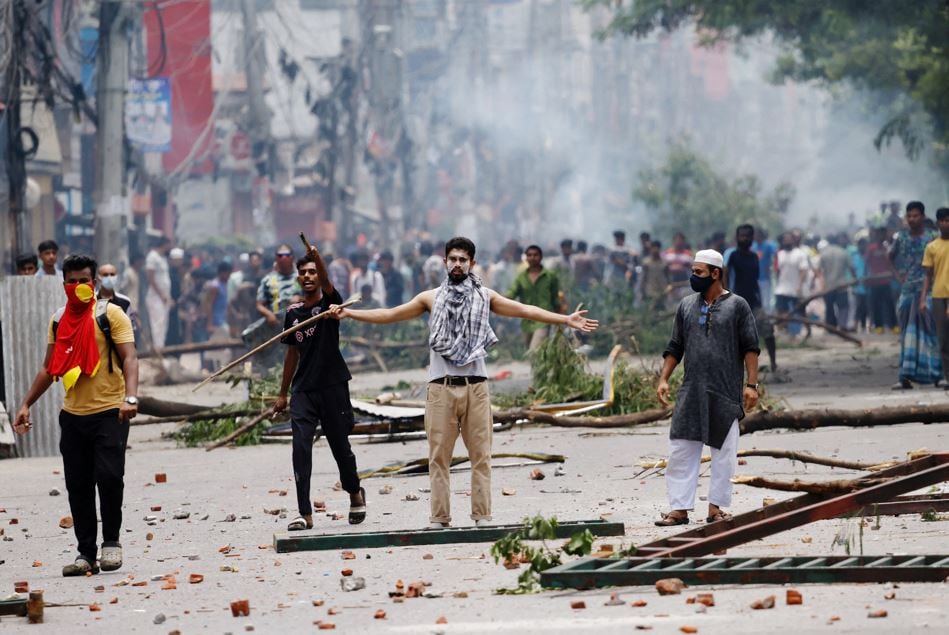87
- This week's violence has killed at least 133 people so far, posing a monumental challenge to Prime Minister Sheikh Hasina's autocratic government after 15 years in office. Ms Hasina had been due to leave the country on Sunday for a planned diplomatic tour but abandoned her plans amid protests.
- With the death count climbing and police unable to contain the violent protests, the Bangladesh government on Friday imposed a national curfew and deployed the military.
- The curfew was lifted briefly on Saturday afternoon to allow people to run essential errands, but otherwise people have been ordered to remain at home and all gatherings and demonstrations have been banned.
- Authorities also imposed a nationwide internet shutdown on Thursday that remains in effect, severely hampering communication in and out of Bangladesh. Government websites remain offline and major newspapers including the Dhaka Tribune and Daily Star have been unable to update their social media platforms.
- Nearly 1,000 Indian students have returned to India from Bangladesh through various land transit points or by flight. External Affairs Minister S Jaishankar said the Foreign Ministry is fully focused on ensuring safety and well-being of the Indians in Bangladesh.
- The High Commission is in regular contact with more than 4,000 students still in various universities across Bangladesh. Students from Nepal and Bhutan have also been aided in crossing into India upon request.
- The US State Department has warned Americans not to travel to Bangladesh and said it would begin removing some diplomats and their families from the country roiled by deadly civil unrest.
- Violence escalated in Bangladesh's capital Dhaka and elsewhere over protests by students, demanding reforms to the quota system for government jobs.
- The protesters are demanding an end to a quota system that reserves up to 30% of government jobs for relatives of veterans who fought in Bangladesh's war of independence in 1971 against Pakistan.
- The quotas have caused anger among students who face high youth unemployment rates, with nearly 32 million young Bangladeshis not in work or education out of a total population of 170 million people.

